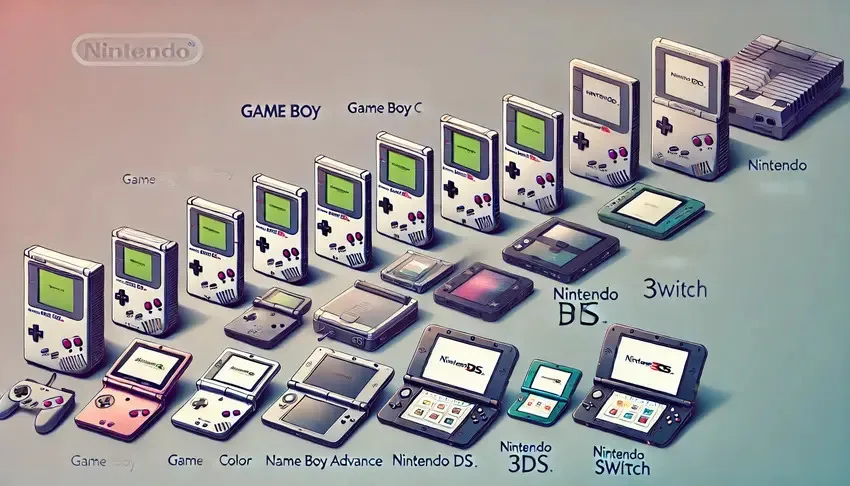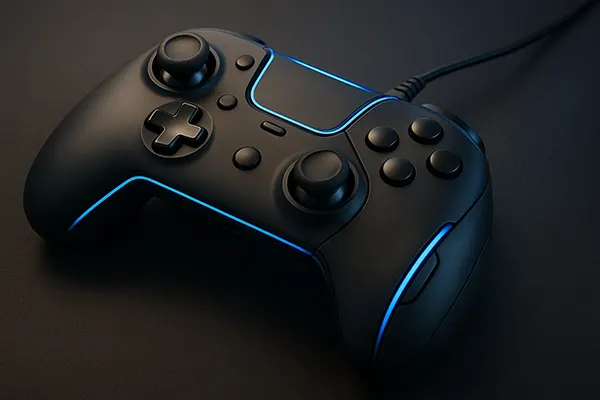
The Evolution of Nintendo Handheld Consoles
The landscape of handheld gaming has been significantly shaped by Nintendo, a company that has consistently set new standards in portable gaming devices. Over the years, Nintendo’s handheld consoles have evolved, each generation bringing innovative features, more powerful hardware, and a unique gaming experience that has captivated millions of gamers worldwide. In this article, we’ll explore the evolution of Nintendo’s handheld consoles, from the original Game Boy to the versatile Nintendo Switch.
Game Boy
Nintendo’s journey in handheld gaming began with the launch of the Game Boy in 1989. This iconic device was the first portable gaming console to achieve mainstream success, combining affordability with a vast library of games. The Game Boy’s design was straightforward yet durable, featuring a monochrome display and an 8-bit processor. Despite its modest technical specifications, the Game Boy was a massive success, thanks in part to its extensive game library, which included timeless classics like Tetris and Super Mario Land. Its portability and long battery life made it a must-have for gamers on the go.
Game Boy Color
In 1998, Nintendo introduced the Game Boy Color, an upgraded version of the original Game Boy. As the name suggests, the most significant advancement was its ability to display color graphics, a feature that added new depth and vibrancy to games. The Game Boy Color was fully backward compatible with the original Game Boy titles, ensuring that players could continue enjoying their favorite games in color. This backward compatibility was a crucial factor in the Game Boy Color’s success, as it allowed Nintendo to maintain the loyal customer base established by the original Game Boy while attracting new players with enhanced visual experiences.
Game Boy Advance
The Game Boy Advance, released in 2001, marked a significant leap in handheld gaming technology. With a 32-bit ARM7TDMI CPU, the Game Boy Advance offered more powerful graphics and processing capabilities than its predecessors, allowing for more complex and visually impressive games. The console also featured a wider, horizontal screen and shoulder buttons, enhancing the gaming experience. The Game Boy Advance was backward compatible with both Game Boy and Game Boy Color games, making it a versatile device that catered to a wide range of gaming preferences. Titles like Pokémon Ruby and Sapphire and The Legend of Zelda: The Minish Cap showcased the console’s potential and solidified its place in gaming history.

Nintendo DS
In 2004, Nintendo took handheld gaming to new heights with the release of the Nintendo DS. The DS introduced several groundbreaking features, including dual screens (one of which was a touchscreen), built-in Wi-Fi for multiplayer gaming, and backward compatibility with Game Boy Advance games. The innovative use of the touchscreen opened up new possibilities for gameplay, allowing for more interactive and intuitive game mechanics. The Nintendo DS quickly became a global phenomenon, with a diverse library of games that appealed to both casual and hardcore gamers. Titles like Nintendogs, Brain Age, and Mario Kart DS demonstrated the versatility and creativity that the dual-screen setup offered.
Nintendo 3DS
Nintendo continued to innovate with the launch of the Nintendo 3DS in 2011. The 3DS built upon the success of the DS by adding autostereoscopic 3D technology, which allowed players to experience 3D effects without the need for special glasses. This feature added a new dimension to gaming, literally and figuratively, offering more immersive experiences. The 3DS was also backward compatible with DS games, ensuring that players could still enjoy their existing library while exploring new titles like Super Mario 3D Land and The Legend of Zelda: Ocarina of Time 3D. Despite initial concerns about the viability of 3D gaming, the 3DS proved to be another success for Nintendo, with a robust lineup of games and continued support from third-party developers.
Nintendo Switch
The evolution of Nintendo’s handheld consoles reached a new peak with the release of the Nintendo Switch in 2017. The Switch is a hybrid console, capable of functioning as both a home console and a portable device, offering unprecedented flexibility in how and where games can be played. Its powerful hardware, vibrant HD display, and innovative Joy-Con controllers have made it a favorite among gamers worldwide. The Switch’s library includes a mix of new titles, such as The Legend of Zelda: Breath of the Wild and Super Mario Odyssey, as well as ports of popular games from other platforms. The Nintendo Switch represents the culmination of decades of innovation in handheld gaming, combining the best elements of its predecessors with modern technology to create a console that is truly versatile and accessible.
Nintendo’s handheld consoles have evolved remarkably over the years, each iteration bringing something new and exciting to the world of gaming. From the humble beginnings of the Game Boy to the groundbreaking Nintendo Switch, Nintendo has consistently pushed the boundaries of what portable gaming can be. As we look to the future, it’s clear that Nintendo will continue to innovate, creating new experiences that captivate and inspire gamers of all ages.





